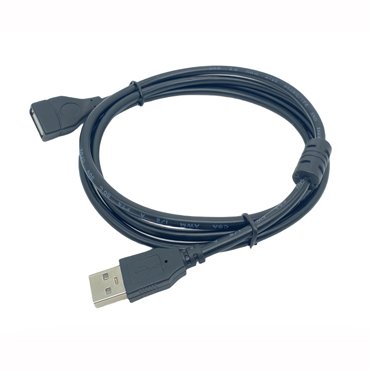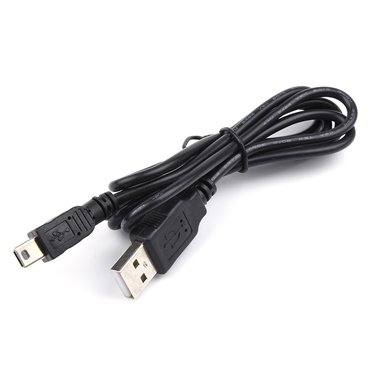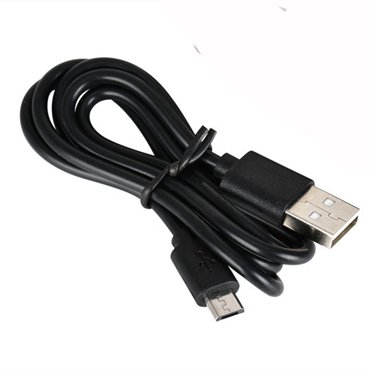USB Cable Manufacturer
Send Your Inquiry Today
USB Cable Supplier in China
USB cables play a crucial role across various applications. Also referred to as Universal Serial Bus cables, they facilitate the connection and powering of diverse devices and computers. These cables further provide a standardized interface ensuring efficient and reliable data transfers, peripheral connectivity, and power supplies.
USB cables are characterized by various connector types, each tailored to fulfill specific requirements while ensuring compatibility with the appropriate devices. At QLCable Electronic, we possess the expertise necessary to design and manufacture a range of USB cable products that precisely align with your application demands.
Various XT30 Cables
Send Your Inquiry Today
Send Your Inquiry Today
Send Your Inquiry Today
Send Your Inquiry Today
Send Your Inquiry Today
Send Your Inquiry Today

Choosing a USB Cable or Connector
Selecting the appropriate USB cable and connectors entails considering numerous factors. This is due to the existence of USB connector types as either male or female, designed to be interoperable. The male connector must fit snugly into the female connector.
At QLCable Electronic, we strive diligently to guide our clients in selecting the USB cable that precisely aligns with their requirements. The following chart will facilitate your understanding of the appearance of each USB cable, enabling you to determine which male plug or female receptacle suits your application's needs.
For clarity, here are some key points to remember when choosing USB cables:
- The female receptacle or male plugs
- The output and input of the USB types
- The USB cable color and length
- The USB type can either be type A, B, C, Mini USB, and Micro USB.
Send Your Inquiry Today
Where Are USB Cables Used?
USB cables serve a myriad of functions. This means they can be used for:
Data Transfers: USB cables facilitate the transfer of data between various devices and machines. This encompasses file transfers between a smartphone and a computer, synchronizing data between a computer and a camera, or even connecting external storage devices like USB flash drives to computers.
Peripheral Connections: USB plays a crucial role in connecting a wide range of peripheral devices to computers, including scanners, printers, game controllers, keyboards, and various other external monitors.
Charging Devices: Over time, USB cables have been utilized for charging a variety of devices, including smartphones, smartwatches, portable electronics, and Bluetooth speakers, among others.
Firmware Updates: Many electronic devices, such as smartphones, gaming consoles, and cameras, require various firmware updates to ensure their security and enhance their functionality.
Video and Audio Output: USB cables can facilitate the seamless transmission of both video and audio output signals.
Send Your Inquiry Today


Quality Control
At QLCable Electronic, all our USB cable extensions boast high-quality materials for enhanced and efficient performance. This entails the use of pure copper conductors and robust PVC jackets. Furthermore, our cables are engineered with multiple shielding layers to minimize interference.
Our reinforced SR cables excel in enduring over 10,000 bending tests. Each cable undergoes rigorous testing to guarantee exceptional speed and stability, distinguishing us from our competitors.
Send Your Inquiry Today
Each USB Cable Is Suited to A different Task

USB-A
USB-A is widely utilized in power outlets and computers for charging purposes. To charge, users must connect the USB-A end to another USB plug or a computer.
It's crucial to keep in mind that USB-A cables can only be inserted into the port in one direction. One way to determine the correct orientation is by observing the USB symbol typically printed on the top of the cable. Always ensure proper insertion to prevent damage to the device or the cable.
Send Your Inquiry Today

USB-B
USB-B ports are primarily used for connecting external hard drives to PCs and printers. However, USB-B cables are currently less commonly available compared to other USB cable types.
Send Your Inquiry Today

Mini-USB
The USB-Mini cable is frequently utilized for connecting various mobile devices, such as cameras and MP3 players. Its compact size renders it ideal for connecting smaller devices.
Send Your Inquiry Today

Micro-USB
The Micro-USB cable was once a ubiquitous USB cable and can still be found in various older models. This cable enables data reading without the need for a computer, allowing users to connect their flash drives or memory sticks directly to their mobile devices.
Similar to the USB-A cable, micro-USB cables also require proper orientation for connection to a port. This means users must be attentive and ensure the port's shape matches the Micro-USB cable to prevent any damage.
Send Your Inquiry Today

USB-C
This is indeed the most recent advancement in USB cable technology. The advantages of USB-C stem from its ability to offer swift data transfers and a higher power delivery. This enables phones to charge rapidly. Additionally, USB-C cables are reversible, allowing them to be plugged in either direction.
Send Your Inquiry Today

USB-3
These cables were designed to ensure backward compatibility with earlier versions of USB cables and ports. This type of USB features uniquely shaped connector pins that enhance the cables' durability for more robust applications. Both USB-3A and USB-3B are quite similar to USB-A and USB-B cables, with the only difference being the blue interior coloring for better distinction. The USB-3 micro cable also includes additional pins to facilitate the transfer of more data.
Send Your Inquiry Today
How many USB versions are there?
USB cables come in various versions, including USB 2.0, USB-3.0, and USB-3.2. These versions help determine the maximum data transfer rate for each USB. It's also important to note that the type of USB version required largely depends on the devices that need to be connected or charged.
| Standard | Also Known As | Year Introduced | Connector Types | Max. Data Transfer Speed |
| USB 1.1 | Full Speed USB | 1998 | USB-A USB- | 12 Mbps |
| USB 2.1 | Hi-Speed USB | 2000 | USB-A USB-B USB Micro A USB Micro B USB Mini A USB Mini B USB-C* | 480 Mbps |
| USB 3.2 Gen 1 | USB 3.0 USB 3.1 Gen 1 SuperSpeed | 2008 (USB 3.0) 2013 (USB 3.1) | USB-A USB-B USB Micro B USB-C* | 5 Gbps |
| USB 3.2 Gen 2 | USB 3.1 USB 3.1 Gen 2 SuperSpeed+ SuperSpeed 10Gbps | 2013 (USB 3.1) | USB-A USB-B USB Micro B USB-C* | 10 Gbps |
| USB 3.2 Gen 2×2 | USB 3.2 SuperSpeed 20Gbps | 2017 (USB 3.2) | USB-C | 20 Gbps |
| USB 4 | USB4 Gen 2×2 USB4 20Gbps | 2019 | USB-C | 20 Gbps |
| USB 4 | USB4 Gen 3×2 USB4 40Gbps | 2019 | USB-C | 40 Gbps |









